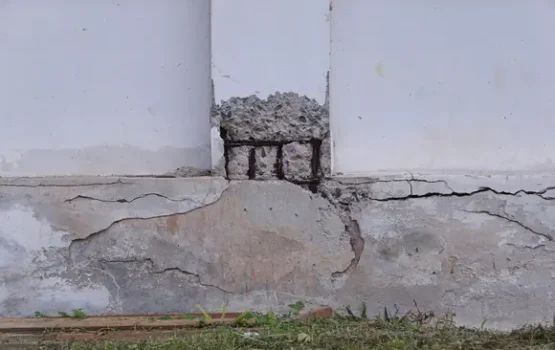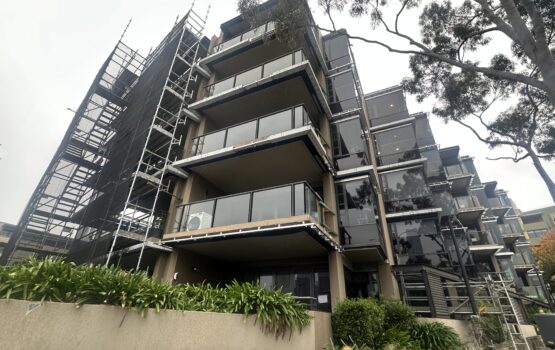Waterproofing remains one of the most common and costly sources of defects in new residential construction across Australia, particularly in NSW. Despite the widespread use of liquid-applied membranes in Class 2 buildings, failure rates remain stubbornly high. For developers and builders, understanding why these failures occur and how to prevent them is critical for both compliance and cost control under today’s regulations.
A Growing Concern Under the DBPA 2020
Since the introduction of the Design and Building Practitioners Act 2020 (DBPA), the stakes for getting waterproofing right have dramatically increased. In New South Wales alone, waterproofing defects have surged to become a top cause of building rectification orders. These failures don’t just result in leaks; they carry major consequences for project timelines, insurance premiums, and reputational damage.
For Class 2 developments, any shortcuts taken on waterproofing can now lead to legal liability under statutory duty of care, with potential claims arising up to ten years after project completion.
Understanding Liquid-Applied Membranes
Liquid-applied membranes are popular due to their versatility, cost-efficiency, and ease of application. They are commonly used in wet areas, rooftops, balconies, and planter boxes. Compared to sheet membranes, liquid systems offer seamless coverage and are particularly well-suited for irregular surfaces or penetrations. However, these advantages come with risks: improper application or lack of verification at key stages can easily lead to non-compliance and premature failure.
Builders often rely on these membranes because they are fast to install and less labour-intensive. But this approach only works when the installation follows strict quality assurance procedures. In the context of Class 2 building waterproofing, every stage from substrate preparation to final curing must be managed and documented to meet regulatory standards.
Regulatory Framework: NCC 2022 & DBPA 2020
The NCC 2022 waterproofing standards, combined with AS 4654.2, now set the minimum performance requirements for external waterproofing systems. Builders and developers are also bound by the DBPA 2020, which mandates design and building compliance declarations by registered practitioners.
This framework introduces significant responsibilities for Building Practitioners, Design Practitioners, and Principal Design Practitioners, and makes non-compliance far more costly. For waterproofing, this means that:
- All designs must comply with NCC and AS 4654.2.
- Practitioners must declare that the installation aligns with regulated designs.
- Builders are accountable for the long-term performance of the waterproofing system, backed by a 10-year statutory warranty.
There is no room for vague site solutions or undocumented changes. Liquid-applied membranes must be part of a complete, specified system and installed under strict QA conditions.
Five Common Reasons Why Liquid Membranes Fail
Failure in waterproofing is rarely due to one factor. Instead, it usually stems from a combination of overlooked details and missed compliance hold points. The top five causes include:
- Inadequate substrate preparation & falls: Surfaces that are not clean, sound, or properly sloped to drainage create conditions for water pooling and eventual failure. This breaches AS 4654.2 and NCC F1D4.
- Poor detailing around penetrations and movement joints: These high-risk areas demand correct reinforcement and flexible sealants. Neglecting them is one of the most frequent sources of leakage. This breaches AS?4654.2.
- Insufficient dry film thickness (DFT): Relying on guesswork instead of measuring Wet Film Thickness (WFT) and DFT during application can leave membranes vulnerable to pinholing, cracking, or UV damage. This breaches AS?4654.2.
- Premature exposure to weather conditions: Membranes require uninterrupted curing times. Exposure to rain, frost, or wind too early can compromise performance, violating both manufacturer instructions and NCC requirements. This breaches manufacturer TDS (NCC F1D4 “suitable for use”).
- Unlicensed installers and lack of QA documentation: The use of unqualified applicators or skipping quality assurance hold points undermines compliance and leaves no proof of due diligence for future disputes.
Consequences for Developers and Builders
Under the DBPA waterproofing compliance framework, the implications of a failed membrane extend well beyond minor repairs. Developers and builders face extended liability, including NCAT claims, rectification orders, and delays in settlement. Insurance premiums are rising in response to the frequency of waterproofing-related disputes.
In addition, rectification is no longer a matter of patching or resealing. If a membrane is deemed non-compliant or defective, it must be removed and replaced in full or receive an engineered overlay that meets all current standards. This must be documented, certified, and declared by appropriate practitioners. Makeshift fixes are no longer accepted.
No Room for Patchwork Solutions
The DBPA makes it clear, defective work must be rectified to the same standard as new construction. Builders can no longer rely on after-the-fact solutions. If a liquid membrane system fails, simply recoating or applying localised repair isn’t enough. Full compliance must be demonstrated through recertification, QA records, photographic evidence, and formal declarations.
This change forces the industry to shift from reactive to proactive: invest in proper systems, trained applicators, and quality assurance from day one.
Preventing Liquid Membrane Failures in Your Next Project
To safeguard your next project and avoid becoming another statistic in the growing number of waterproofing defects in NSW, developers and builders must embed quality from the design stage onward.
- Specify a complete system that includes primer, membrane, and protection layers, all supported by third-party test data.
- Mandate substrate testing and thickness checks at key QA hold points. WFT/DFT measurements should be logged for every stage.
- Employ licensed waterproofers only. Avoid any applicator who cannot provide credentials and documented QA experience.
- Implement photographic QA records in a live register. These become vital when making compliance declarations.
- Schedule independent supervision or third-party verification. This can de-risk exposure, especially for critical areas like balconies and rooftops.
With the right approach, builders can eliminate rework costs and confidently deliver a compliant product.
Build Once, Build Right
The cost of doing waterproofing right the first time is always less than the cost of fixing it later. In a regulatory environment where Class 2 building waterproofing is under intense scrutiny, there is no room for shortcuts. Embrace compliant systems, embed quality assurance, and ensure every step is properly recorded. A proactive mindset isn’t just good risk management, it’s now a legal necessity.
How MJ Engineering De-Risks Your Waterproofing Installations
At MJ Engineering, we help developers and builders stay compliant and avoid disputes through structured engineering support. Our services include:
- Design peer review and specification sign-off
- Independent QA inspections during membrane application
- Regulated remedial design and waterproofing declarations
- Expert witness support for NCAT proceedings
- End-to-end project coordination to ensure full compliance with NCC 2022 waterproofing standards
With MJ Engineering on your team, you gain more than technical guidance, you gain peace of mind that your project will meet its legal obligations without unexpected rework. Contact us for more information.




